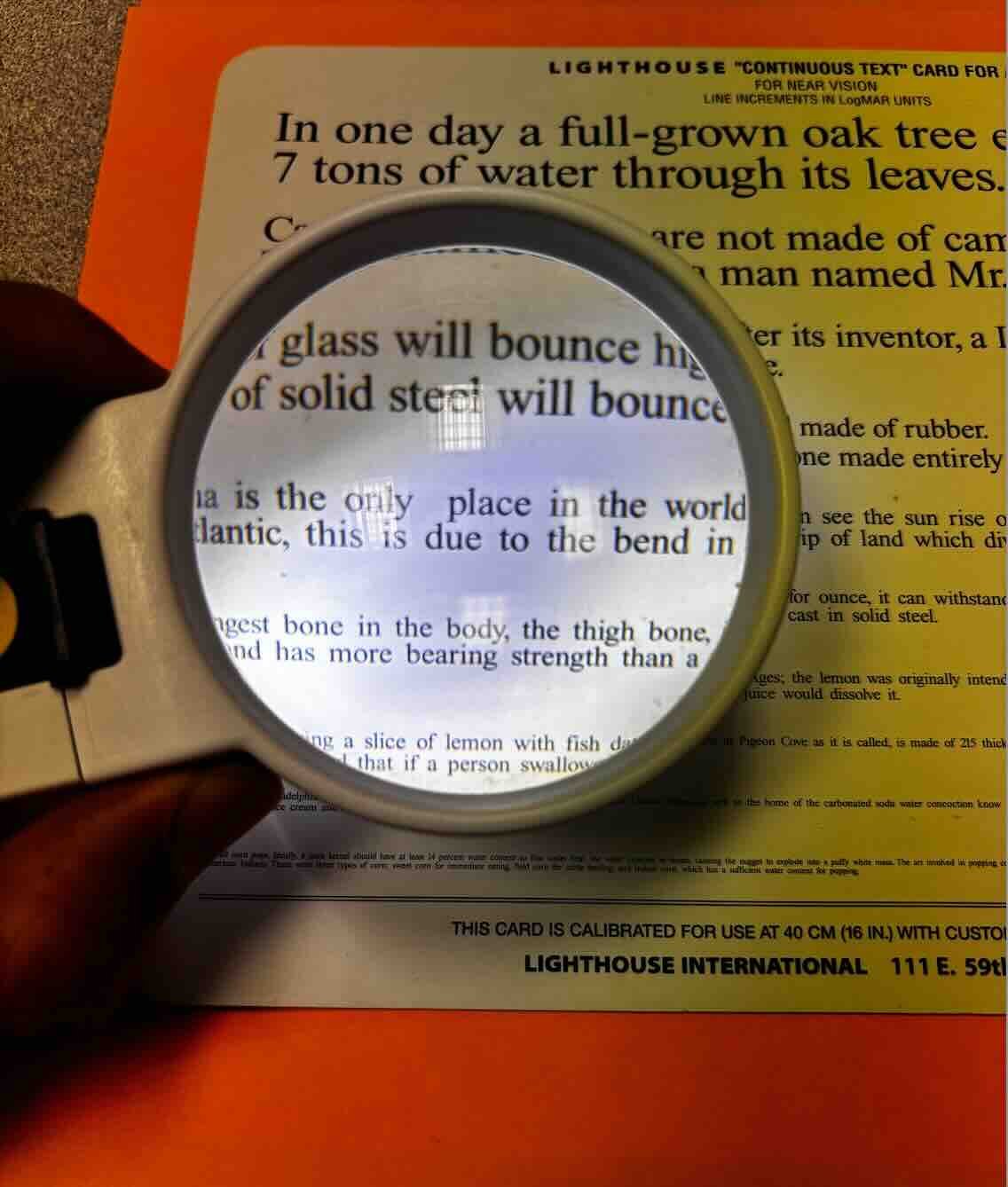The Ultimate Guide to Lighted Magnifying lens
The Guide to Lighted Magnifying lens
What is magnifying glasses?
A magnifying lens is a simple optical instrument used to make objects appear larger than they are. A lighted magnifying glass has built-in lighting to make things easier to see.
This guide covers everything about lighted enlarging lens, including lens types, lights used, construction, and applications.
In this guide to Lighted Magnifying lens
You will learn:
1. The basics of optical magnifier and their uses.
2. Different types of lenses used in magnifying lenses.
3. The role of lighting in reading magnifier.
4. Types of light sources used in magnifying glasses.
The Basics of optical magnifier and their uses:
Magnifying glasses are essential tools that make small details more visible. They work by using a convex lens to bend light rays so that they converge, making the object appear larger to the viewer. Magnifying glasses have been used for years for reading, scientific research, and various crafts.

Types of Lenses Used in a Magnifying Glasses

The lens is the heart of any magnifying glass. Most magnifying glasses have a convex lens that curves outward on both sides.
A biconvex lens is another common type, which has a more pronounced curvature, allowing for higher enlargement. Manufacturers make these lenses from glass for clear enlargement.
Glass lenses are heavy. You can also make them from acrylic for lighter weight and reduced risk of shattering. However, acrylic lenses are more prone to scratching.
The Role of Lighting in Magnifying Glasses
Lighting is crucial for magnifying glasses, especially when working in dim conditions or with intricate details. Proper lighting enhances clarity and reduces eye strain. Magnifying glasses with lights illuminate the object, making it easier to see small details as the viewer observes it.

For those with age-related macular degeneration (ARMD), proper lighting is essential for daily activities like reading. This is why a lighted magnifying glass is a must-have tool for enhancing visibility and improving quality of life.
Types of Light Sources in Magnifying Glasses
Most modern lighted magnifying glasses use LED lights because of their efficiency, brightness, and long lifespan. LEDs are small, consume less power, and provide a bright, even light. Some magnifiers still use fluorescent lights, which offer a softer, more diffused light. However, people generally prefer LEDs because they are more durable and energy-efficient.
Styles and Features of Lighted Magnifying Glasses
- Handheld Magnifying Glass with Light
Portable and convenient, these are ideal for on-the-go use. They are perfect for reading small print like restaurant menus, food labels or medication labels, inspecting small objects, and other quick tasks.
- Stand magnifying glasses
Offer stability and are ideal for activities like reading longer text such as books, newspaper or magazine, ideal for those who has difficulty holding magnifier with their hand.
- The hands-free magnifying glass:
Allows you to wear it around the neck or attach it to the head. They are perfect for tasks that require both hands, such as crafting or intricate repairs.
- Floor lamp with Magnifying Glass:
Combining a magnifier with a LED light. These are ideal for desk work. They offer bright, focused light along with magnification, making them perfect for reading, studying, or detailed work.
Conclusion:
Lighted magnifying glasses are tools that make things easier to see and reduce eye strain. They combine magnification and lighting. This makes them important for various tasks.
If you need an optical magnifier , understanding the types of lenses and lights can help you choose the right one. Consider handheld or hands-free options for various tasks. Choose between handheld or hands-free options for different tasks.





2 Comments